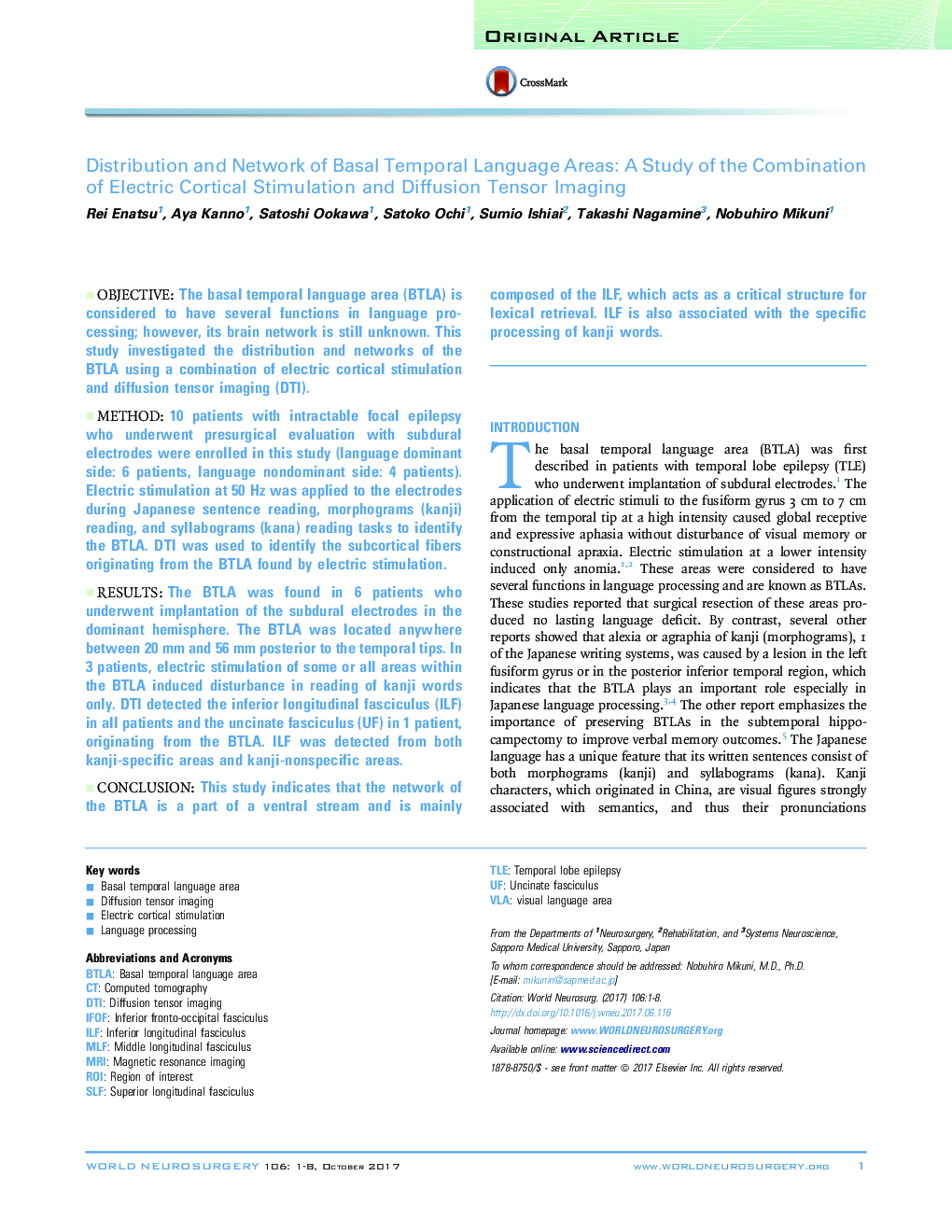| Article ID | Journal | Published Year | Pages | File Type |
|---|---|---|---|---|
| 5633959 | World Neurosurgery | 2017 | 8 Pages |
ObjectiveThe basal temporal language area (BTLA) is considered to have several functions in language processing; however, its brain network is still unknown. This study investigated the distribution and networks of the BTLA using a combination of electric cortical stimulation and diffusion tensor imaging (DTI).Method10 patients with intractable focal epilepsy who underwent presurgical evaluation with subdural electrodes were enrolled in this study (language dominant side: 6 patients, language nondominant side: 4 patients). Electric stimulation at 50 Hz was applied to the electrodes during Japanese sentence reading, morphograms (kanji) reading, and syllabograms (kana) reading tasks to identify the BTLA. DTI was used to identify the subcortical fibers originating from the BTLA found by electric stimulation.ResultsThe BTLA was found in 6 patients who underwent implantation of the subdural electrodes in the dominant hemisphere. The BTLA was located anywhere between 20 mm and 56 mm posterior to the temporal tips. In 3 patients, electric stimulation of some or all areas within the BTLA induced disturbance in reading of kanji words only. DTI detected the inferior longitudinal fasciculus (ILF) in all patients and the uncinate fasciculus (UF) in 1 patient, originating from the BTLA. ILF was detected from both kanji-specific areas and kanji-nonspecific areas.ConclusionThis study indicates that the network of the BTLA is a part of a ventral stream and is mainly composed of the ILF, which acts as a critical structure for lexical retrieval. ILF is also associated with the specific processing of kanji words.
